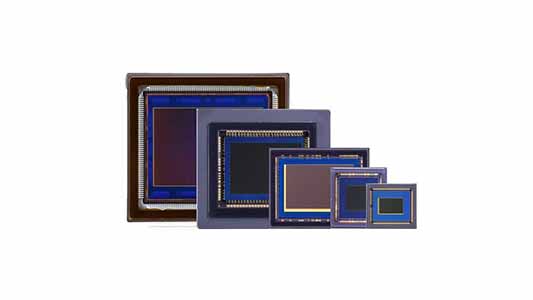CMOS (Complementary Metal-Oxide-Semiconductor) image sensors are pivotal in modern digital imaging technology. These sensors are the backbone of devices ranging from smartphones and digital cameras to advanced medical imaging systems and autonomous vehicles. In this article, we will explore what CMOS image sensors are, how they work, their advantages, and their diverse applications.
What is a CMOS Image Sensor?
A CMOS image sensor is a type of electronic sensor used to capture images. It converts light into electrical signals through the use of CMOS technology, which involves a combination of p-type and n-type MOSFETs (Metal-Oxide-Semiconductor Field-Effect Transistors) to create digital and analog circuits.
How CMOS Image Sensors Work
The operation of a CMOS image sensor can be broken down into several key steps:
Photon Collection: The sensor array consists of millions of photodiodes, each representing a pixel. When light hits these photodiodes, photons are absorbed, and electron-hole pairs are generated.
Charge Accumulation: The photodiodes accumulate charge proportional to the intensity of the incident light. Brighter light results in more charge.
Readout: Each photodiode’s accumulated charge is read out through a transistor switch. This is a key advantage of CMOS technology, as it allows for faster readout speeds compared to other sensor types like CCD (Charge-Coupled Device).
Analog-to-Digital Conversion: The analog signal (charge) from each pixel is converted into a digital signal by on-chip analog-to-digital converters (ADCs). This digital signal represents the intensity of light at each pixel.
Image Processing: The digital signals are processed to form an image. This processing can include color interpolation, noise reduction, and other image enhancement techniques.
Advantages of CMOS Image Sensors
CMOS image sensors offer several advantages over other types of image sensors, making them the preferred choice for many applications:
Low Power Consumption: CMOS sensors consume less power than CCD sensors because each pixel has its own charge-to-voltage conversion, and they can be selectively addressed.
High Speed: The parallel processing capability of CMOS technology allows for faster image capture and readout speeds.
Integration: CMOS sensors can integrate additional processing circuitry on the same chip, reducing the need for external components and simplifying system design.
Cost-Effectiveness: The manufacturing process for CMOS sensors is less complex and more cost-effective, leading to lower production costs.
Flexibility: CMOS sensors are highly flexible and can be designed for various resolutions and pixel sizes, making them suitable for a wide range of applications.
Market Summary:
The global CMOS Image Sensor market was valued at USD 20,725 Mn in 2020 and is projected to reach USD 39,624 Mn by 2028, expanding at a CAGR of 8.6% during the forecast period. CMOS image sensor, known as complementary metal-oxide-semiconductor image sensor, is a technology found in digital cameras with integrated electronic circuitry.
Competitive Landscape
- Key players in the market include STMicroelectronics, Sony Group Corporation, SAMSUNG, Semiconductor Components Industries, LLC (ON Semiconductor), Canon Inc., SK HYNIX INC., OmniVision Technologies, Inc., Hamamatsu Photonics K.K., Panasonic Corporation, Teledyne Digital Imaging Inc., GalaxyCore Shanghai Limited Corporation, Himax Technologies, Inc., ams AG, PixArt Imaging Inc., and PIXELPLUS. These players are considered as key market players based on their different varieties of product availability, regional presence, better supply chain management system, and the increasing demand for the products.
The players are adopting key strategies such as product development, geographical expansion, mergers and acquisition and many other strategies to increase their demand for CMOS Image Sensor.
Get more information here: https://growthmarketreports.com/report/cmos-image-sensor-market-global-industry-analysis













